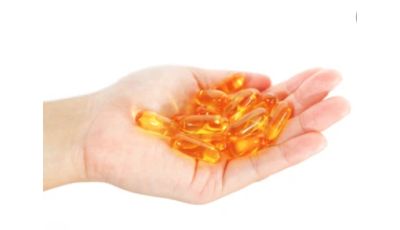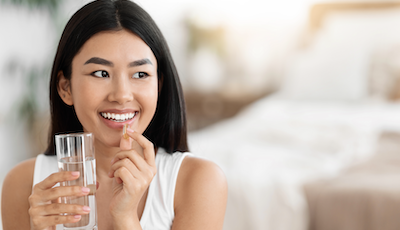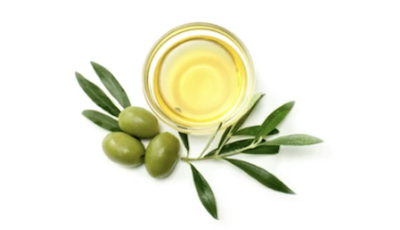Dry eyes are a common but complex condition that can have a large impact on quality of life. While omega-3 fatty acids have long been known for their promotion of heart health and healthy blood pressure levels, many people don’t know there are many studies researching its positive effects on dry eye conditions.


Dry Eyes Caused by Aqueous Insufficiency or Evaporative Dry Eye
Dry eyes are a complex condition due to the involvement of the lacrimal glands, eyelids, and ocular surface tissues. Dry eyes are extremely common, with people over the age of 65 and women more commonly affected. It is estimated that up to 3.23 million American women alone suffer from a dry eye condition. Dry eyes can also inhibit a person — it reportedly impacts quality of life to the same degree as moderate angina (chest pain caused by a reduction of blood flow to the heart). Because of this, many studies have researched options for dry eye relief.
There are two main types of dry eye — aqueous insufficiency (when lacrimal gland aqueous secretion is reduced) and evaporative dry eye (when a deficient lipid layer in the tear film causes an increase in tear evaporation). This means either a person doesn’t have enough tears for hydrating the eye, or the tears they do produce dry so quickly that they don’t hydrate the eye.


Omega-3s Help Evaporative Dry Eye
Studies have found that meibomian gland disease contributes to evaporative dry eye in 86% of patients. The meibomian glands secrete meibum, an oil that stabilizes the tear film. The tear film lays over the outer surface of the eye, helping to keep tears from evaporating in order to keep the eyes hydrated, among other purposes. It is comprised of an oily outer layer that keeps the inner two layers of water and mucus available. As mentioned, evaporative dry eye comes from a deficiency in the lipid layer of the tear film. When the meibum is not available to provide stabilization of the tear film, evaporative dry eye can occur.
Studies have found omega-3 fatty acid supplementation with fish oil increases fatty acids in meibomian secretions. This increase in fatty acids keeps the meibum in a liquid state at room temperature, which decreases the tear film’s ability to evaporate. This increases lubrication of the eye, reducing the effects of evaporative dry eye.

Omega-3s Help Aqueous Insufficiency
Inflammation and age-related macular degeneration (when a part of your retina called the macula is damaged) can cause the other type of dry eye, aqueous insufficiency. There are many studies that link omega-3 intake with reduced inflammation. A reduction in inflammation works to prevent aqueous insufficiency at the source, thus decreasing the symptoms of dry eyes.
Studies also link high levels of cholesterol to an increased risk of developing age-related macular degeneration and meibomian gland disease. As mentioned, these conditions can cause dry eyes. Studies have shown that omega-3s promote healthy cholesterol levels, allowing researchers to conclude that omega-3s promote a lower risk of dry eye when caused by high cholesterol levels.
Some studies have shown that patients in Japan and other Asian countries have extremely low levels of age-related macular degeneration. Thus, researchers are inferring that people with diets high in omega-3 containing foods (like fish) are less likely to suffer from the conditions that lead to dry eye.

Doses of 1200-1600 mg EPA and 500 mg DHA Produce Positive Dry Eye Outcomes
A 2016 study revealed that taking a total of 1680 mg of EPA with 560 mg of DHA resulted in the reduction of dry eye symptoms, improving the thickness of tears, lowering inflammation, and promoting normal values of tear film break up time.
In a 2011 study, patients were given 450 mg of EPA and 300 mg of DHA, resulting in an increase in the amount of tear production and tear volume, but reported no significant effects on meibum lipid composition or tear evaporation rate.
A 2013 study gave patients 1245 mg of EPA and 540 mg of DHA, which resulted in lower reports of eye pain, normal tear film break up time, and positive changes in patients’ rose bengal staining scores (a measurement of ocular surface damage).
Many researchers believe that more proof of omega-3’s positive effects on dry eyes is needed to conclude a definitive link. Other researchers believe the positive effects were only found in studies that provided high amounts of EPA and DHA. It is believed that a standard dose of EPA and DHA in fish oil is still needs to be determined when it comes to their positive effects on dry eye conditions.

Vitamins A, C, and D Benefit Dry Eyes
There are several vitamins and supplements researchers have linked to promoting benefits for dry eyes. Vitamin A helps support the cornea, which is the protective outer layer on the eye. Deficiencies in vitamin A have been linked to dry eyes caused by inadequate tear production. Foods high in vitamin A include sweet potatoes, carrots, spinach, and broccoli.
Vitamin C shows benefits for dry eyes by promoting eye health. Vitamin C acts as an antioxidant, working to prevent free radicals in the body from causing oxidative stress. Oxidative stress can lead to cell damage, including damaging the cells within the blood vessels of the eye. Adding an antioxidant can help prevent this.
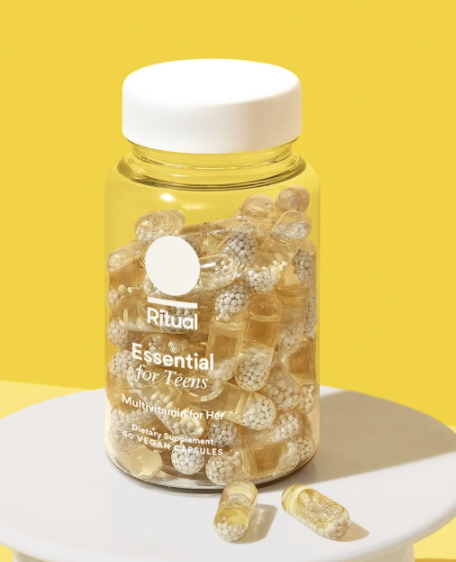
Summary
The conditions that cause dry eye conditions are complex, involving many different processes that can decrease overall quality of life. The first type of dry eye is aqueous insufficiency, when tear glands are not producing as many tears as required. The second type is evaporative dry eye, when tears are produced but they evaporate too quickly on the eye’s surface.
Science shows that meibomian gland disease contributes to many cases of evaporative dry eye by decreasing available meibum oil, causing tears to evaporate quickly. Studies show that omega-3s help to keep the meibum in liquid form longer. This in turn keeps tears from evaporating as quickly.
Studies show that omega-3s promote a reduction in inflammation, which has been linked to aqueous insufficiency dry eye. Studies also show that cholesterol is correlated with an increased risk of age-related macular degeneration and meibomian gland disease, which are associated with dry eye conditions. Many studies have found a link between omega-3s and healthy cholesterol levels, therefore this is another way omega-3s help alleviate causes of dry eyes.
In these studies, doses between 1200 and 1600 mg of EPA and about 500 mg of DHA were used to achieve the study outcomes. Vitamins A, C, and D also show benefits in helping with both the symptoms and causes of dry eyes.
FAQ
Omega-3s are a type of fat that our bodies can’t produce on their own but we need in order to function properly. Omega-3s help with the production of hormones, which then affects regulation of blood clots, artery constriction and relaxation, and inflammation, to name a few. This means omega-3s can play a role in the prevention of heart disease and stroke, lowering cholesterol, along with the possibility of promoting control over rheumatoid arthritis, lupus, and eczema.
Omega-3s have also been studied for their effects on promoting healthy hair growth and their role in the development of a healthy fetal brain. Omega-3 fatty acids are also found in face and skin care products for their purported anti-aging and collagen-stimulating properties.
References
Adarme-Vega T, Lim D, Timmins M, Vernen F, Li Y, Schenk P. Microalgal biofactories: a promising approach towards sustainable omega-3 fatty acid production. Microb Cell Fact. 2012;11(1). doi:10.1186/1475-2859-11-96.
- Adarme-Vega T, Lim D, Timmins M, Vernen F, Li Y, Schenk P. Microalgal biofactories: a promising approach towards sustainable omega-3 fatty acid production. Microb Cell Fact. 2012;11(1). doi:10.1186/1475-2859-11-96.
- Arterburn L, Oken H, Bailey Hall E, Hamersley J, Kuratko C, Hoffman J. Algal-Oil Capsules and Cooked Salmon: Nutritionally Equivalent Sources of Docosahexaenoic Acid. J Am Diet Assoc. 2008;108(7):1204-1209. doi:10.1016/j.jada.2008.04.020.
- Chaddha A, Eagle K. Omega-3 Fatty Acids and Heart Health. Circulation. 2015;132(22).
- Engström K, Saldeen A-S, Yang B, Mehta JL, Saldeen T. Effect of fish oils containing different amounts of EPA, DHA, and antioxidants on plasma and brain fatty acids and brain nitric oxide synthase activity in rats. Upsala Journal of Medical Sciences. 2009;114(4):206-213
- Ji X, Ren L, Huang H. Omega-3 Biotechnology: A Green and Sustainable Process for Omega-3 Fatty Acids Production. Front Bioeng Biotechnol. 2015;3. doi:10.3389/fbioe.2015.00158.
- Kris-Etherton P, Harris W, Appel L. Omega-3 Fatty Acids and Cardiovascular Disease. Arterioscler Thromb Vasc Biol. 2003;23(2):151-152.
- Li X, Liu J, Chen G, Zhang J, Wang C, Liu B. Extraction and purification of eicosapentaenoic acid and docosahexaenoic acid from microalgae: A critical review. Algal Res. 2019;43:101619. doi:10.1016/j.algal.2019.101619.
- Office of Dietary Supplements - Omega-3 Fatty Acids. Ods.od.nih.gov. . Published 2021. Accessed February 9, 2022.
- Shen Y, Yuan W, Pei Z, Wu Q, Mao E. Microalgae Mass Production Methods. Trans ASABE. 2009;52(4):1275-1287. doi:10.13031/2013.27771
- Skulas-Ray A, Wilson P, Harris W et al. Omega-3 Fatty Acids for the Management of Hypertriglyceridemia: A Science Advisory From the American Heart Association. Circulation. 2019;140(12). doi:10.1161/cir.0000000000000709
- Zhu Z, Jiang J, Fa Y. Overcoming the Biological Contamination in Microalgae and Cyanobacteria Mass Cultivations for Photosynthetic Biofuel Production. Molecules. 2020;25(22):5220. doi:10.3390/molecules25225220.
-
Triglyceride Omega 3
By Dr. AlishaMay 31, 2022 -
Algae Omega-3
By Dr. AnnaJune 28, 2022 -
Olive Oil Omega-3
By Dr. AlishaAugust 14, 2022

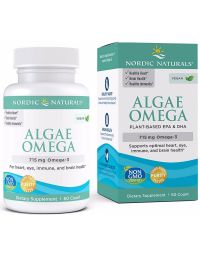

Search the blog
Article Categories
- All Articles (95)
- Rating Charts (1)
- Beauty & Skincare (17)
- FAQ (0)
- Hair Care (9)
- Health & Wellness (12)
- Anti-Aging (4)
- Kid's Health (0)
- Makeup (2)
- Men's Health (2)
- Oral Care (3)
- Sunscreen (7)
- Skin Tools & Treatments (10)
- Supplements (26)
- Videos (0)




